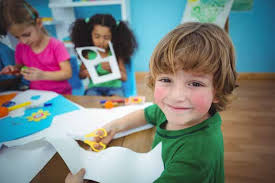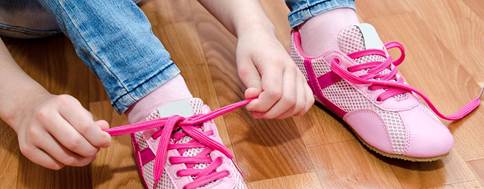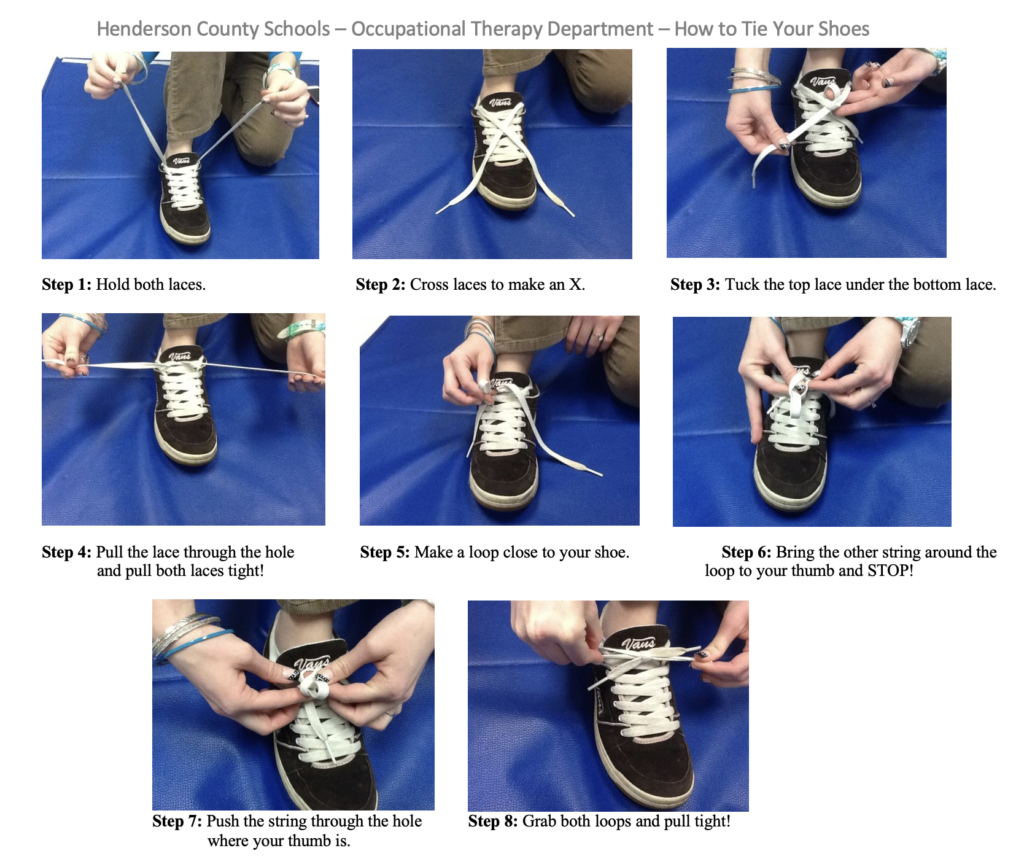Bilateral Coordination
Bilateral coordination is the ability to coordinate both sides of the body at the same time in a controlled and organized manner; for example, stabilizing paper with one hand while writing or cutting with the other. Good bilateral coordination is an indicator that both sides of the brain are communicating effectively and sharing information. This is important for accomplishing many daily activities such as walking, climbing stairs, playing musical instruments, stirring food in a bowl, using tools that require two hands and having full visual awareness of the environment. As children progress in development, they will begin to establish a dominant hand and automatically cross midline. This ability to utilize a dominant hand and a non-dominant hand in activities indicates brain growth and lateralization in functional tasks, which is very important for motor planning, directionality, and visual motor skills.

Click here for beginner cutting skills.
Children who have difficulty coordinating both sides of their body can have difficulty completing:
- Self help activities- getting dressed and tying shoes,
- Fine motor activities – stringing beads, assembling blocks, buttoning
- Visual motor tasks- drawing, writing, cutting, catching/ throwing
- Gross motor activities – crawling, walking, climbing stairs, riding a bike
Crossing midline: A child who avoids midline crossing can have difficulty coordinating both sides of the body and often times, has difficulty establishing hand dominance; tends to alternate hand use when coloring, writing, eating, throwing, etc.
Ways to help at home and school
If your child struggles with motor planning, it’s important to know that this skill can improve. Give your little one lots of opportunities to use her body. You can help your child learn the initial steps and sequences of tasks, so tasks become more automatic. You may need to demonstrate how to throw a ball, put a shirt on or form shapes when coloring. Breaking down each step into smaller simple steps also is helpful to learn multi step skills. But it takes time, patience, visual and physical demonstrations, and lots of practice.

Click here to find out how to teach self-care routine’s two kids with motor planning issues.

Click here to see how to teach your child to tie shoes.
